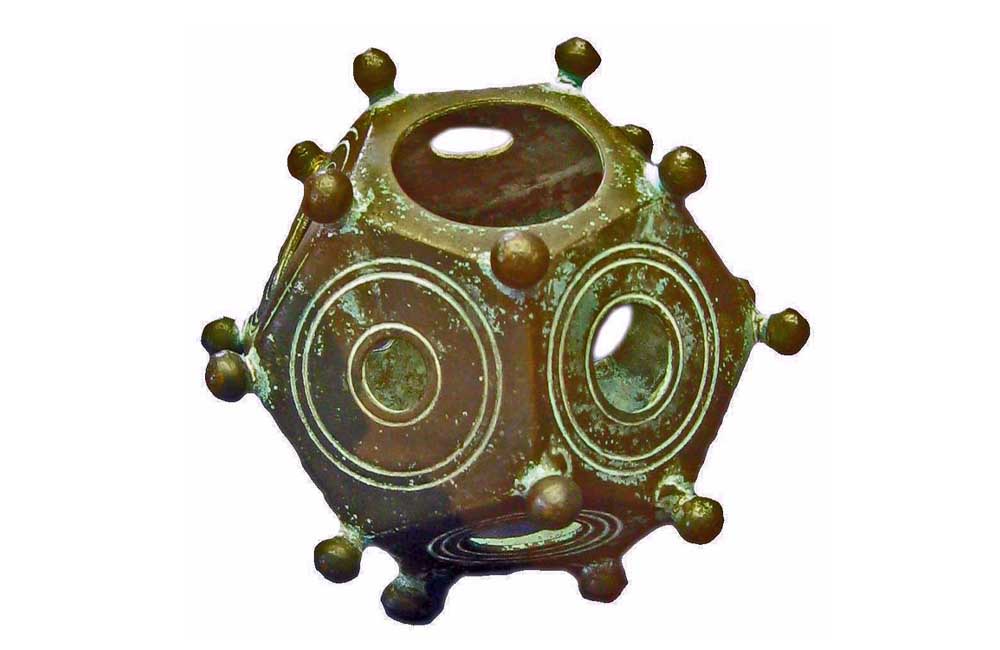Roman Dodechahedra
There has been a lot of speculation about this small and hollow object. A dodecahedra has twelve flat pentagonal faces, and they each have a circular hole of different diameters. This unusual shape goes all the way back to the 2nd to the 4th century AD. There have been more than 100 of these discovered across Europe. Two of them had candle wax, which suggests that they were in use as candle holders. But other theories say that they were coin gauges or fortune-telling gadgets as well. They are seen in different sizes that range from the size of a basketball to the size of a golf ball. As you can imagine, archaeologists are eager to get to the bottom of things. Just so you know, you can get an imitation off Amazon!

Roman Dodechahedra
Aztec Sun Stone
If you head over to the National Anthropology Museum in the Mexican capital, you will find the Aztec Sun Stone. The sculpture is massive, with a diameter of 3.6 meters, a thickness of 1.2 meters, and a weight of 24 tons or 58,000 pounds. It is full of intricate hieroglyphic carvings and is believed to have been made between the 15th and 16th centuries. In 1790, it was discovered beneath the ground while they were building a new city on top of the ancient one. The circular design of the stone has to do with the beliefs of the Aztecs. It depicts the relationship between man and god, the cosmic cycles, the passing of days, and more.

Aztec Sun Stone


